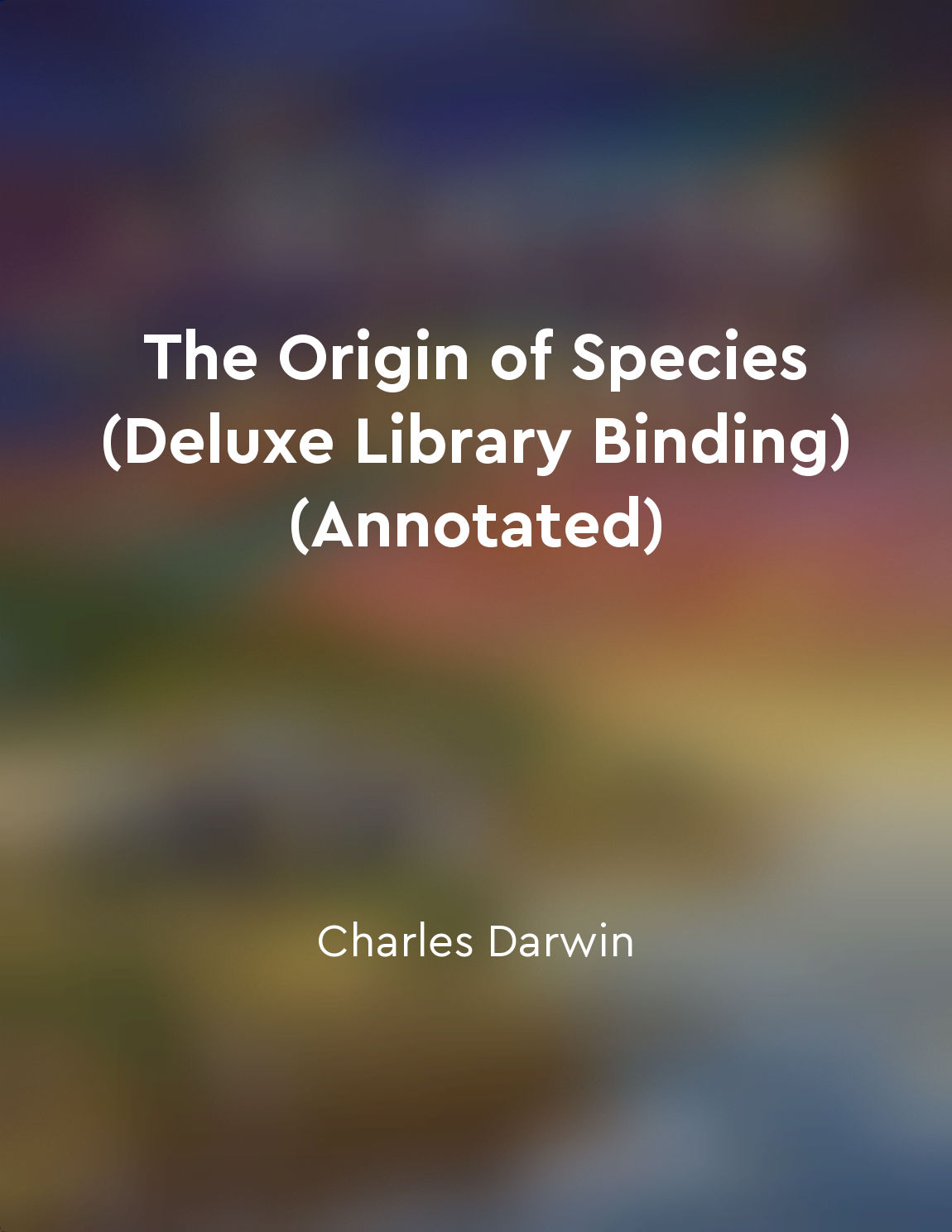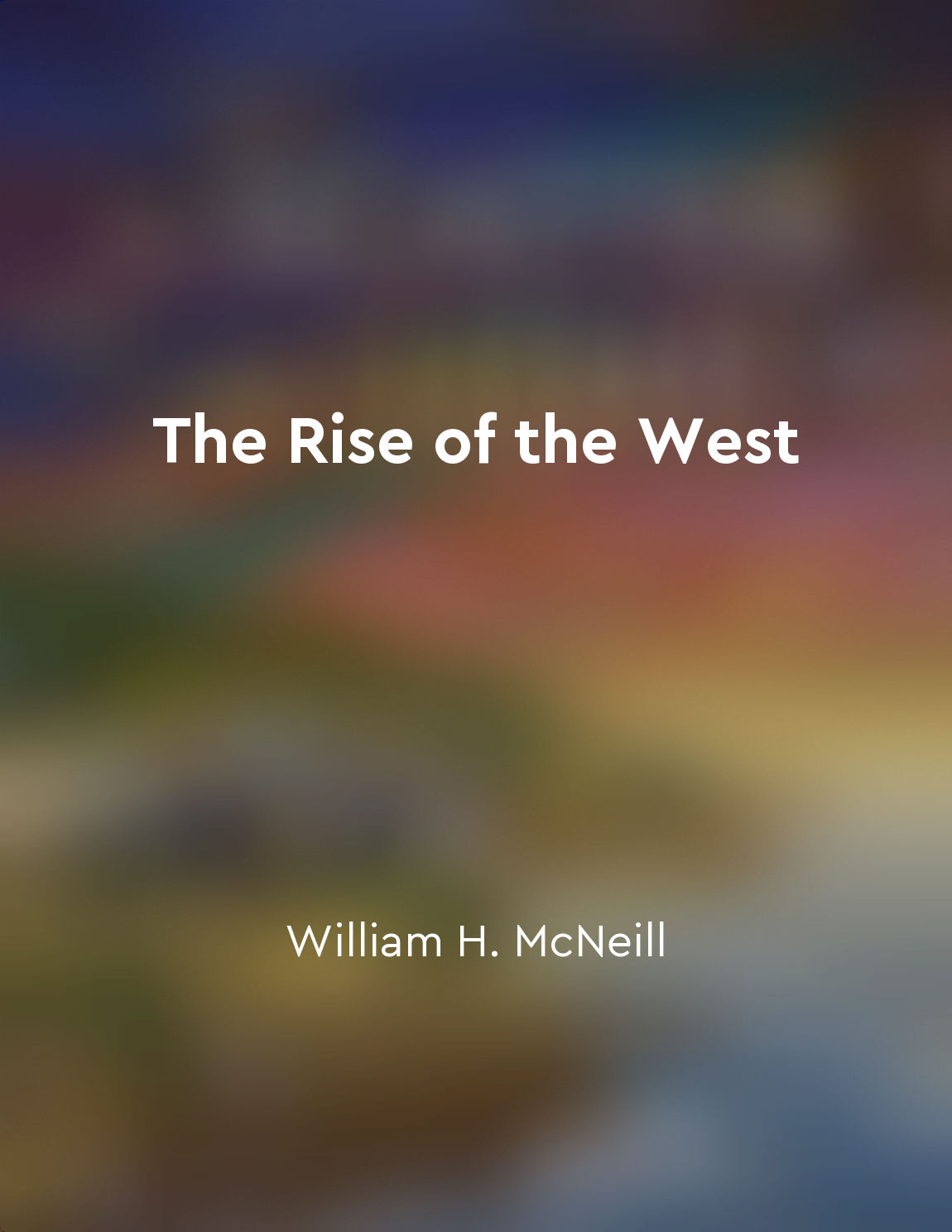Evolution operates through bottomup mechanisms from "summary" of The Evolution of Everything by Matt Ridley
The idea that evolution operates through bottom-up mechanisms is a fundamental concept in understanding how complex systems emerge from simple interactions. This concept suggests that change and adaptation in biological, social, and technological systems are not directed or controlled from the top down, but instead arise from the interactions of individual agents or components. In biological evolution, for example, the diversity and complexity of life on Earth have emerged through the process of natural selection acting on the variation present in populations of organisms. This variation arises through random mutations and genetic recombination, and the selection pressures of the environment determine which traits are passed on to future generations. Over time, these small changes accumulate, leading to the emergence of new species and the adaptation of existing ones to changing conditions. Similarly, in social and cultural evolution, bottom-up mechanisms play a crucial role in shaping the norms, beliefs, and practices that govern human societies. Ideas and behaviors spread through populations, with individuals adopting and adapting them based on their own experiences and interactions with others. Over time, these cultural traits can evolve, giving rise to new social institutions, technologies, and ways of thinking. In technological evolution, bottom-up mechanisms are also at work, driving innovation and progress through the cumulative effects of individual creativity and collaboration. New technologies often emerge from the tinkering and experimentation of individual inventors and entrepreneurs, who build on the successes and failures of those who came before them. As these innovations spread and are refined through markets and networks of communication, they can transform entire industries and societies.- The concept that evolution operates through bottom-up mechanisms highlights the importance of decentralized processes in driving change and adaptation in complex systems. By understanding how individual interactions and decisions shape the course of evolution, we can gain insights into the emergent properties of biological, social, and technological systems, and appreciate the power of small-scale actions in shaping the world around us.
Similar Posts
Criticality balances order and disorder in complex systems
The concept of criticality is a fundamental principle in understanding complex systems. Criticality is the delicate balance bet...
The will to power
The desire to dominate, to achieve control over others, to assert one's own will above all else - this is the essence of the wi...
Time's directionality based on entropy increase
According to the laws of thermodynamics, entropy tends to increase over time. This means that the universe as a whole is moving...

Hybridization can lead to speciation
Hybridization, the interbreeding of different species, can sometimes result in the formation of a new species. When two differe...
Epidemics shape population dynamics
Epidemics have played a crucial role in shaping the dynamics of human populations throughout history. When a new infectious dis...

Entrepreneurs battled for supremacy in the digital realm
In the cutthroat world of technology, entrepreneurs engaged in fierce competition to dominate the digital landscape. These ambi...

Global interconnectedness impacts societal development
The interconnectedness of global societies has played a crucial role in shaping the development of civilizations throughout his...
Exchange leads to innovation and prosperity
The exchange of goods and ideas is the engine of human progress. When people come together to trade, they are not just swapping...
Phase transitions mark abrupt changes in system states
Phase transitions are pivotal moments in the life of a complex system. These transitions occur when a system suddenly shifts fr...
The concept of heredity and its implications
The concept of heredity is one of great importance in understanding the nature of living organisms. It is through heredity that...


